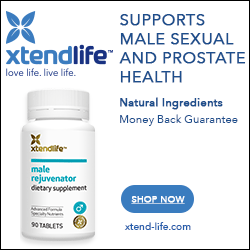Twinkie, Deconstructed
I’ve just finished Steve Ettlinger’s “Twinkie, Deconstructed.” Its bright orange cover caught my eye a few weeks back in a local bookstore, and once I read the back cover, I was hooked (this, in large part to the influence of Elissa, who is a food scientist by trade).
The premise of “Twinkie, Deconstructed” is a simple one; explain clearly the origin and role of each and every ingredient in everyones favorite snack cake, the Hostess Twinkie (believe it or not, I’ve never actually had a Twinkie. After reading this book, I’m seriously considering buying some just to try one).
Interestingly enough, the Twinkie (itself over 70 years old; it was first developed in the 1930’s) is a perfect snapshot of the evolution of modern food technology. From the very beginning, the manufacturer’s main concern has been shelf life, and for the most part, almost every ingredient in the Twinkie profile is carefully chosen for its ability to keep them fresh and tasty as long as possible. That, and to mimic as close as possible the more typical cake ingredients they replace; whole eggs, cream and butter.
While “Twinkie, Deconstructed” was an overall eye-opener, there were two things I found most astounding about this read…
The first is that Twinkies are manufactured with 14 of the top 20 chemicals made in the U.S.
The second is the amount of food additives that are derived from petroleum products.
Take vanilla, for example. We all know vanilla beans are the fruit of a plant; an orchid actually, and the only one to bear fruit. But natural vanilla is difficult to grow and process, it’s expensive, it takes forever to cure and process, and only grows in equatorial regions.
This doesn’t bode well for the United States, who is the largest consumer of vanilla in the world.
What to do?
Isolate the principle chemical (flavors are “pure chemistry” says Mr. Ettlinger) responsible for the “vanilla” flavor – called vanillan – and synthesize it (natural vanilla has over 200 additional components that contribute to the unique vanilla flavor, which is why some manufacturers will supplement the synthetic vanilla with a little of the real stuff, just to “round out the flavor.”)
Sounds simple enough, right? Here’s where it gets interesting…
Vanillan (or 4-hydroxy-3-methoxybenzaldehyde) is produced worldwide in two major petro-checmical plants from crude oil and a component thereof; benzene. Neat, huh? What’s interesting here is that the end result of the processing is the exactly same chemical that occurs naturally in the vanilla beans. And this leads to one of the book’s most import points…
Food technology is simply high-tech chemistry performed in complex processing plants; elementary chemistry is what you are doing when you mix flour, water, salt, sugar and yeast and cook it in the oven to make bread. While it may not thrill you to know that artificial vanilla is derived from hydrocarbons, the end result won’t hurt you any more than the “natural” stuff will, nor will you notice much of a difference on the palate.
If you think this sounds alarming, rest assured; “Twinkie, Deconstructed” is not an alarmist book. As Mr. Ettlinger illustrates…
“… one the world’s most lethal chemicals, chlorine, and one of the most reactive chemicals, sodium, have an exalted place on every table in the Western world: the salt shaker.”
And there you have it; it’s just chemistry. 🙂
Since my purpose here is not to provide a detailed review of this publication but merely to pique your own interest, let me say this…
If eat processed food, or if you’ve ever looked at the label of a processed food item and thought, “what the…?”, “Twinkie, Deconstructed” is well-worth the read. It’s available online at Amazon.com.




August 20, 2008
Well, those hydrocarbons were originally derived from plants and animals, so what goes around, comes around. 😉
IMHO, people often take a “bass ackwards” approach to these things: Twinkies aren’t “bad” because they’re loaded with additives…rather, it’s because they offer very little nutriton for the calories…they’re truly “faux” foods, as so much of what we should be eating food for, has been stripped away.
Or – as you put it – it’s about shelf life and taste…not nutrition. 🙁
August 20, 2008
I remember a field trip when I was just wee lad to the local pulp mill. After a facinating tour of the miles and mile of conveyor belts, buzzing gear motors, thunderous machinery that could chew a whole log into chips in just a few seconds, they took us to a showroom to see all the wonderful products that can be extracted from wood. Lo and behold vanilla (vanillan) flavoring was among the dozens of products on display. for a long time I didn’t know real vanilla came from vanilla beans.
Maybe I should be grateful for all the twinkies, ho ho’s, razzies and hostess pies I ate as a kid for the preservatives that must be keeping me from rotting from the lack of nutrition value. Sort of circular isn’t it?